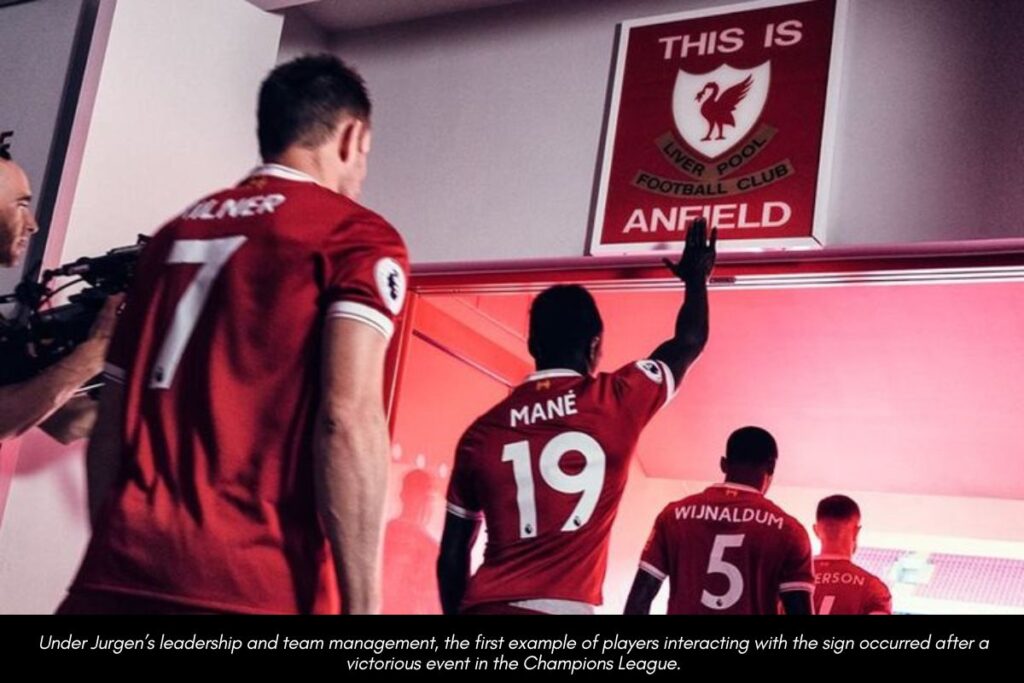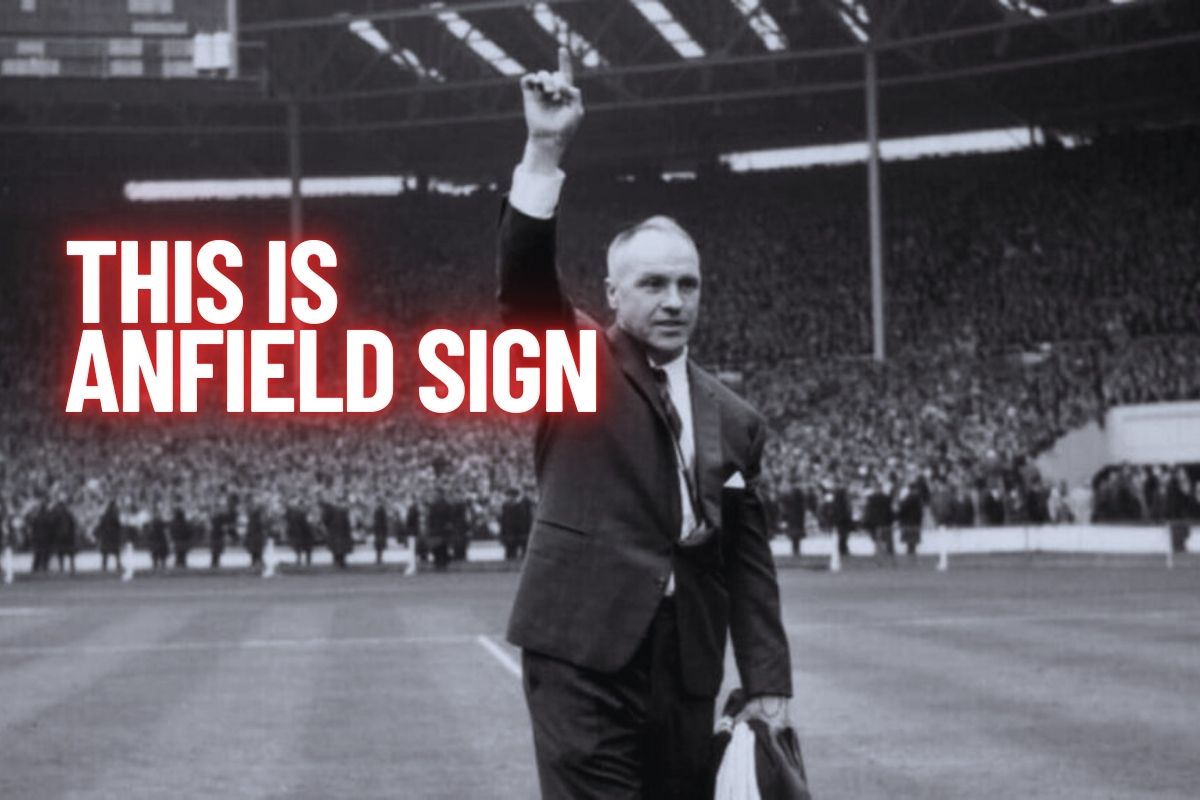- Klopp’s decree banning players from touching the “This is Anfield sign“
- Former Arsenal striker confessed to touching the sign before any match to show respect
- Paul Jones believes the famous sign should be left to those donning the Liverpool Jersey
If you have experienced an Anfield tour as a committed and loyal supporter, you will undoubtedly have recognized the iconic sign boastfully displayed on the wall: “This is Anfield”. Above the familiar presence, the “this is Anfield sign” showcases a broad significance within Liverpool Football Club. This is steeped in a historic framework that sometimes goes unknown. Digging deeper into this popular phrase, some truths are unraveled and a light is shed particularly on its historic illustration. The sign positions itself as an iconic symbol for Jurgen Klopp’s team, being an invitation to many players to integrate it into their pre-match rituals by touching it for good fortune.
Motivation to Liverpool, Tension to Rivals
The “this is Anfield sign” isn’t there purely as a decoration for the stadium instead, there is a reason behind it. A good example is when Bill Shankly said that the famous sign presence is there to act as a reminder to the players about the team they are playing for and the benefit of being in a Liverpool FC jersey.
To the opposition, the Anfield sign is a reminder that the game is not going to be as easy as they may think. You can try to imagine the motivation behind Liverpool FC and the ‘tension’ created particularly on the rivals. It’s this specific purpose that makes Liverpool triumph over the competitors when they tread from the tunnel to the pitch.
What is the Effect of ‘This is Anfield Sign’?
Originally conceptualized by a groundsman to display “Welcome to Anfield”, Bill injected it with diversified intensity and impact when he put it on the wall. The sign has faced three iterations for some time now. However, its main purpose remains uninterrupted. The sign presence narrates the field’s intimidating aura, possibly influencing the results of the games. The psychological effect of such information cannot be overlooked, particularly in establishing a scenario that makes the visiting clubs unsettled.
Consider placing a bet on a Liverpool match and you may comprehend how illustrative sign epitomizes the pitch capability to unnerve the visiting teams, offering the home team with a critical merit. Such small components can tangibly facilitate the intimidation of visiting clubs, displaying the strength of home-ground benefits in the space of soccer matches.

“It’s there to remind our lads who they are playing for and to remind the opposition who they are playing against”.
– Bill, Shankly
During his leadership, Bill Shankly focused on two things. To motivate his squad and inject fear into the opponents. He in a succinct manner expressed his intention, saying, “It’s there to remind our lads who they are playing for and to remind the opposition who they are playing against” Bill’s vision held the sign’s strategic impact, serving as a regular notification of the team’s allegiance for Liverpool FC while subtly unsettling competing teams about the awaiting defeat posed by facing the team.
Do Rivals Touch the Anfield Sign?
Bill Shankly intended to cause intimidation on the visiting opponents. Nevertheless, it has become a culture for some visiting players to interact with it – honoring their presence at one of the soccer’s popular venues. A good instance is Arsenal’s former player, Ian Wright, who confirmed touching the prominent sign in the course of his visits to Liverpool’s stadium. Ian did so before any match with Liverpool. He gave an expression of reverence for its historic status, finding it charming and not resistible. On the contrary, other players refrained from taking part in the ritual – giving suggestions of a different approach towards the significant emblem.
Several visiting teams, even those who hold allegiance to Liverpool FC, do distance themselves from touching the sign. Paul Jones a previous goalkeeper to Southampton and a radical childhood Liverpool fan, embraced this ritual until his brief emergency backup goalkeeper for the club two decades ago.
Jurgen Klopp and the Sign Meaning
Upon the big assignment for Liverpool FC, Jurgen implemented a strict policy prohibiting players from touching the “This is Anfield sign” unless they had already made a felt contribution to the team. Jurgen, confirming the sign’s presence and significance, termed it an act of honor, kept only for them that achieved wins with Liverpool. Any premature engagement with the sign prompted his disapproval, as one player learned firsthand. However, the framework has changed since that time. Under Jurgen’s leadership and team management, the first example of players interacting with the sign occurred after a victorious event in the Champions League. Following that event, as the club amassed multiple victories, most of the team members became qualified to interact with the Anfield sign. This transitioned into a symbol of good luck for future games.

It’s a culture started by Jurgen and has gained momentum, ingraining itself in Liverpool’s illustration, likely to continue as it forms part of the club’s history. Yes, a club’s history with significant importance stretches through the soccer community. This habit seems to persist, retaining the sign’s concrete symbolism for the near future.
Conclusion
The “This is Anfield” Liverpool sign not only stands as a marker in the stadium but also a confirmation of the tradition, pride, and essence of Liverpool FC. The club’s path through history, from Bill to Jurgen’s redeveloping its significance, the sign mirrors a transition of a symbol that transcends a normal decoration. Integrated in its simple context – is a complex illustration; a notification for the Liverpool squad of their role and a psychological edge against rivals. However, its significance goes beyond the four stands of Anfield, intriguing players and triggering emotions, whether motivating reverence or evoking restraint among the rival players who like Paul Jones, respected its presence as Liverpool fans.
The historic illustration of the sign holds the ethos of Liverpool FC, where honor for culture co-exists with the team’s ever-changing transition. It is a symbol of a fusion of history and modernization, retaining a ritual while housing new meanings. As it proceeds to become an emblem of legacy and motivation, the “This is Anfield sign” remains a touchstone within the field and the hearts and minds of people like you who cherish its prime symbolism in the beautiful match.
Stay tuned for more updates on Liverpool FC Times and Stories. Your thoughts are always welcome in the comments section. Thank you for your continued support!
YNWA (You’ll Never Walk Alone)!
The Liverpool FC Times Team
LiverpoolFCTimes.com
